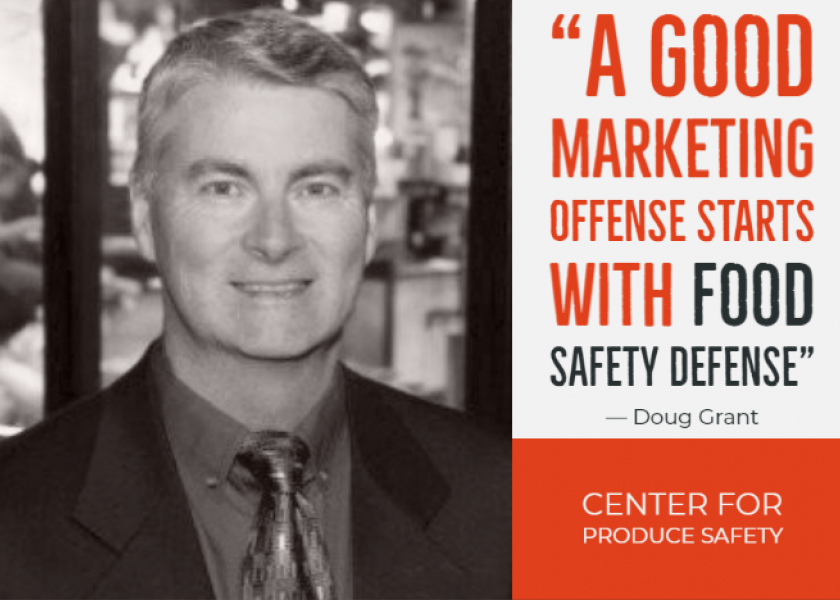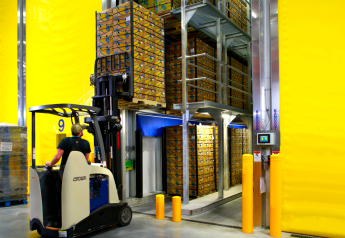A good marketing offense starts with food safety defense

The main food safety goal for most fresh produce suppliers is to stay in good standing with their customers, which today largely means passing buyers’ annual audits. Check all the boxes on the audit form and you are good to go, right? Unfortunately, many companies implicated in foodborne illness outbreaks had passing audit scores and still had a problem.
Clearly, our industry must work harder to minimize pathogen contamination – to protect public health and our own futures. To grow our businesses by growing consumption, a good marketing and sales offense must start with a good food safety defense.
We all know that our companies’ reputation is its brand. In this era of transparency, consumers want more than “just” fresh produce that tastes good at a reasonable price. They also want to know where their food comes from, and how and by whom it was produced.
It’s a big job to tell our story in a compelling way that earns and maintains consumers’ trust and loyalty. Yet all that work can be undone by a food safety problem. Because above all, consumers want to know that our foods are safe to eat.
So what does a good food-safety defense look like? Let’s start here: it’s time to move traditional quantitative audits to focus on the underlying risk assessment and science that supports food safety for your operation.
For example, Drew McDonald, vice president of quality and food safety at Taylor Fresh Foods, posits: “Say you have two companies in the same industry sector that have vastly different scales of food safety operations. How is it that they can get the same audit score?” They can because current audits score monitoring sporadically for pathogens the same as conducting controlled, active monitoring.
In other words, the company basing their food safety activities on what the science tells us about aggressively cleaning, sanitizing and verify the efficacy of the program only gets to check the same box as the company who cleans and sanitizes once a month just so they can say they have a sanitation program when audited.
The problem is that it doesn’t take much of a variation in practices to miss detecting contamination altogether, thereby risking an outbreak. Further, how many companies are verifying their monitoring process works as it is intended? Today’s audits don’t account for that.
By looking beyond the audit, buyers can better understand what their suppliers are doing – or not – to safeguard their foods. One marker: McDonald argues that at the least, having a robust, aggressive, effective food safety program should not be a competitive disadvantage.
There also can’t be one-size-fits-all approach to solving for produce safety. Every company in our industry faces a unique set of food safety circumstances. It is up to each of us to apply the latest science to the particulars of our businesses.
Where should you start? In his impassioned farewell speech to the industry upon his retirement last October, Produce Marketing Association Chief Science & Technology Officer Dr. Bob Whitaker highlighted several areas to consider. And for answers he pointed to existing, produce-specific research funded by Center for Produce Safety.
For example, Whitaker noted that we may still be evaluating the potential presence of pathogens by testing for generic E. coli. Yet CPS-funded research has shown that’s not in fact a reliable indicator of the presence of pathogenic forms of E. coli, or of Salmonella.
And since low-level contamination can cause illness, CPS research also indicates we should test at a sufficient frequency to improve our chances of finding it.
For example, Kelly Bright, PH.D.’s 2016-2018 work on the identification of novel indicator organisms to determine the risks of fecal contamination of irrigation waters. And, Trevor Suslow, PH.D’s 2016 work on the evaluation of an alternative irrigation water quality indicator.
CPS-funded research has often found pathogens in open water sources. That indicates we must be diligent in testing and treating irrigation water drawn from these sources, and in managing the window between last water application and time of harvest. See Renata Ivanek, Ph.D’s 2019 project on FSMA agricultural-water die-off compliance provisions. And, Eduardo Gutierrez-Rodriguez, Ph.D’s work on establishing die-off rates of surrogate and virulent EHEC-STEC Strains.
Growing fresh produce near concentrated animal feeding operations (CAFOs) is another practice that CPS research indicates carries risk, noted Whitaker. Reservoirs of pathogenic bacteria can form around CAFOs, and in dry conditions pathogen-containing dust can be transferred to surrounding crops.
A possible solution is for good CAFO operators to apply light water to the ground in their facility to mitigate dust.
Another mitigation comes from LGMA guidelines that recommend fresh produce operations should be at last 1200 feet away for over 1,000 head, and at least 1 mile for over 80,000 head. See Elaine D. Berry, Ph.D’s 2012 work on bio-aerosols from cattle production areas.
Harvest equipment left in the field overnight with the day’s debris still on them is another potential problem. CPS research shows that if equipment isn’t cleaned and sanitized right away, pathogens can form biofilms which are much harder to get rid of. See Laura Strawn Ph.D’s 2017 work on control of cross-contamination during field-pack and retail handling of cantaloupe.
The value to our industry of running a science-based food safety defense was made very clear during the most recent romaine-related outbreak. If the Food and Drug Administration can’t determine an outbreak’s source, they shut everyone down. Imagine losing your entire production season; few businesses can afford such a blow.
Not to mention the blow to consumer confidence. Remember, they can and will find something else to eat.
While we’ve come a long way in our food safety knowledge since CPS was formed 13 years ago, our industry still has many questions to answer. CPS is uniquely positioned to quickly fund the produce-specific research we need to find solutions that will fuel real food-safety change.
McDonald, who also chairs CPS’s Technical Committee, notes he is encouraged by the community and response that he has seen rally around CPS and its work (as I am).
“I have never seen so much enthusiasm from across sectors to support each other, to work together toward concrete solutions,” he says.
After all, the survival instinct is powerful; when we work collectively together to enhance produce safety, we each improve our individual prospects as well.
To review the CPS research projects referenced in this article, go to https://www.centerforproducesafety.org/grant_opportunities_awards.php
Doug Grant chairs Center for Produce Safety’s Knowledge Transfer Task Force and is a CPS board member. He is executive vice president and COO of The Oppenheimer Group. You can reach Doug at doug.grant@oppy.com.







